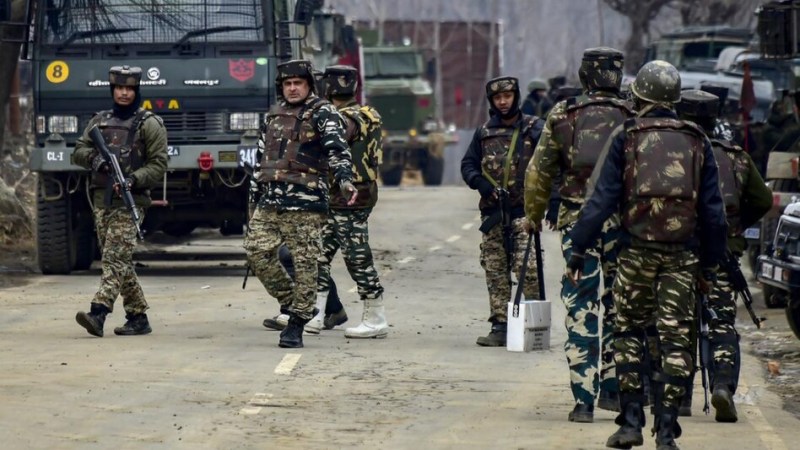Conflict has a grammar of its own. The almost 15-month civil strife in Manipur, too, had to fall prey to some of the imperatives of that syntax. It was bound to happen sooner than later.
The fact that no robust attempt has been made to resolve the ethnic divide is witnessing both a domino effect and one which is further endangering India’s national security.
In a region where ethnicities criss-cross and overlap, discord spillover into Assam a la Jiribam could not have been avoided. Consequently, a potential threat of a further cascade has become a possibility. The Assam Police has got embroiled when it reportedly killed three Hmar militants in Cachar. Hmars have a social affinity with Kukis.
The unrest in Manipur is no longer confined to its geographical limits. Mizoram has already felt the tremors. It is Assam’s turn now. Correct cross border liaison would have to be engineered to manage the problem.
Inside Manipur, the sense that one gets is that the security forces are gradually becoming intolerant of one another. There have been several instances when faceoffs have taken place between the Assam Rifles and the Manipur Police. Such dissonance does not augur well for both Manipur and the Indian state. If discretion is not paid heed to, the security grid divide might witness aping affect in other parts of India, especially Jammu which is witnessing a sudden spurt in violence.
The immediate need of the hour is to have Unified Command Structures in all the conflict zones across the country that do not have such frameworks. These must have security representations from neighbouring states which are already affected or have the potential of being compromised at a later stage. The Unified Command Structure in Assam which decisively battled militancy, and won, stand out as a model for emulation.
Construction of such security architectures would inevitably witness turf wars. It is, therefore, important to unconditionally accord the operational command to the army.
The situation in Manipur has become even more dismal with the recent statement that the NSCN (IM) has warned the Meitei militia group, Arombai Tengol (AT) that it would no longer be a mute spectator to the latter’s actions against Christians.
In the twilight hour of a peace process which the NSCN (IM) is involved in, the last thing that the nation wants is an internecine war which will derail everything.
The NIA charge-sheeting of the NSCN (IM)’s “China-Myanmar” module over the Naga organisation aid to Meitei militants such as the PLA (Manipur) and the Kangla Yawol Kanna Lup to enter Manipur from Myanmar have already added to the disquiet. It is ironical, but the NSCN (IM) are now crossing swords with the AT, which has clear links with the same Meitei militants that the NSCN (IM) is being charged of providing aid to.
The recipe for disaster has to a considerable extent been ascertained by the manner in which the turmoil in Manipur is being allowed to fester and cross state boundaries. The deep-seated animosity between security forces in the state is a matter of great concern. It has to be corrected at once.
The latest NSCN (IM) threat to AT will certainly not go unanswered. The Nagas of Manipur Valley may have to bear the brunt, making the ethnic divide even murkier. Would the Arombai Tengol attack Naga residents and their property in the Valley and open up a two-front war? Is the NSCN (IM), in stark defiance to the delaying tactics of Delhi, trying to emerge as the undisputed leader of all the Tribal Christians of the North East?
This author has seen for himself when he used to go out on patrols with the Assam Rifles in 2001 as to how the NSCN (IM) is using what they term Op Salvation to convert the Notes and the Wanchos of Tirap and Changlang districts of Arunachal Pradesh into Christianity.
But in the Manipur context, it is a well-known fact that there is no love lost between the Nagas and the Kukis. Indeed, they have fought bitterly in the past. So, what has changed now? The author’s surmise is that NSCN (IM) is messaging Delhi about its position of strength and that it can unleash violence – but it is this author’s reading that it is urging Delhi to expedite the dialogue process which is underway, and in the same breath try and emerge as the “chieftain of the Christian people”.
The red lines in the enchanted frontiers have blurred to the extent where only an undefined implosion can take place.
The ecosystem is fast changing in the region. If caution is not exercised, all the sinister aspects could coalesce to light the fuse in the gunpowder keg that a sensitive part of the Northeast is fast metamorphosing into.
(The author is an internationally renowned Conflict Theorist and Bestselling Author)















